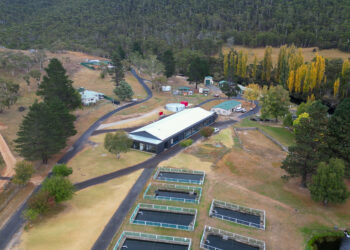A SUSPECTED “blackwater” event appears to be occurring in the mid-Murray, lower Murrumbidgee and throughout the Edward-Wakool systems in Southern NSW after heavy rain and flooding.
The Murray-Darling Basin Authority released a statement on Friday advising the public to expect darker water and dead or dying fish over the coming weeks in the affected areas.
The MDBA’s head of River Management, David Dreverman, said blackwater events like this occur naturally.
“The high level of carbon and low levels of oxygen in the water due to the load of decaying organic matter is not unexpected,” Dreverman said.
Mr Dreverman said some higher parts of the floodplain, particularly in the Edward and Wakool systems, may not have been flooded for more than 20 years, adding to the high carbon load.
“With high carbon loads and floods over this extent of flood plain, it is possible that impacts will be widespread, extending downstream, potentially into South Australia.
According to the freshwater fishing website, Social Fishing, there has been reports from Deniliquin of dead fish as well as Murray crayfish crawling onto the river banks in search of oxygen.
Speaking on the ABC’s NSW Country Hour yesterday, DPI’s Regional Manager for the Murray Darling region, Cameron Lay, agreed the widespread flooding is a natural event and a consequence of the time difference between floods.
However, data received from the field and higher temperatures expected in coming weeks predictably heightens the risk of fish kills across the southern basin.
“This is an extensive event, with the Bureau releasing some figures yesterday saying it was the wettest five-month period in NSW on record,” Lay said.
Mr Lay said that reports of fish kills to date have been reasonably isolated but urged all river users to be looking for signs of distressed fish.
“Our fishers in particular who are out on the water are a critical part of this process, they really are the eyes and ears for us”
To monitor the situation, state agencies and environmental water holders are working together to identify opportunities on how to provide and create local refuges, with increasing oxygen levels for our native fish.
Members of the public are asked to notify their local Fisheries Office or contact the Fishers Watch phoneline on 1800 043 536 if they witness any dead or dying fish in their area.
















